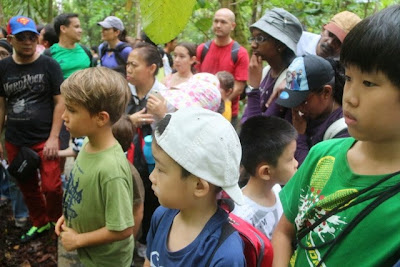SARAWAK’S forests are not only home to some of the state’s rural communities, but also home to several endangered animals such the orangutan, Borneo pygmy elephant, proboscis monkey and rhinoceros, all of which are at risk due to rampant logging.
As environmental activist Mutang Urud writes in the forward of book Money Logging: “Our ancestral land has been desecrated, our history erased, the very memory of our origins lost.”
He continues: “Close to 90% of Sarawak’s ancient forest is now gone. Only 11% of the primary growth remains. How did it disappear?”
It’s a sad reality that while some people are selfishly using Sarawak’s timber as a means of lining their pockets, few are giving the environment a second thought.
Malaysia Nature Society (MNS) Kuching chairman Anthony Sebastian claims to have witnessed firsthand the destruction caused by illegal logging.
According to him, the Samunsam wildlife sanctuary is one example of a place that has been “completely decimated” by illegal loggers over the past 10 years.
“The entire sanctuary is gone, all that’s left are its borders. That should not be happening,” he says.
Even though Samunsam wildlife sanctuary is still listed as a sanctuary on paper, in reality Sebastian says that it is a destroyed forest, with most of its key assets (like Sarawak’s most viable, and studied, population of proboscis monkeys) lost.
Santubong national park is another area that’s been hit by illegal logging.
“We have some pictures of illegal loggers in the area taken by some MNS members, as recently as November last year,” Sebastian says.
Illegal logging can have dire consequences to our environment, wildlife, culture and economy.
Sebastian says, however, that even though some of our “most vital areas” have been logged, our forests will eventually regenerate in around 60 years.
“But our forests will never be the same. We have already lost so many species and we will lose more,” he says.
He continues: “An ecological functioning forest provides food, water, medicines for not only for the indigenous people but also the whole state.”
Our forests also act as a buffer against rainfall.
“Everyone knows when you clear forests, water flows faster which can results in flash floods with the increasing rainfall,” said Sebastian.
But despite all these, illegal logging is still takes place.
In the 2014 Environmental Performance Index, Malaysia scored 1.68 out of a hundred and ranked 129 out of 137 countries for the change in forest cover.
The score factors in areas of forest loss (including deforestation), reforestation (forest restoration or replanting), and afforestation (conversion of bare or cultivated land into forest).
Malaysia is one of the countries that has experienced great forest loss, and that is a worrying fact.
I sincerely hope that the Government takes aggressive action against illegal logging so that we do not lose any more of our trees and wildlife.
Yes, we have laws to punish illegal loggers. But that’s not enough. Enforcement needs to be stepped up and timber thieves need to be prosecuted without prejudice.
Something must be done before it is too late.
> The views expressed are entirely the writer’s own



































_640x427.JPG)
_640x427.JPG)


_640x427.JPG)














